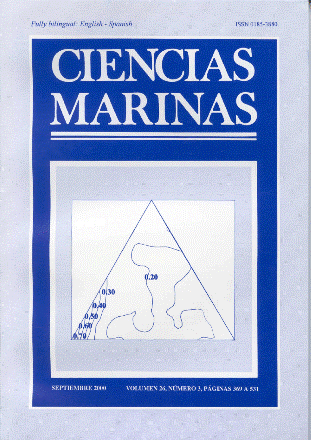Biogeography of the ahermatypic corals (Scleractinia) of the Mexican Pacific
Main Article Content
Abstract
Stony corals have distinct ecological characteristics that are reflected in their ability to build reefs (hermatypic) or not (ahermatypic). The objective of this work was to systematize and analyze the literature and museum records of ahermatypic species of the west coast of Mexico, in order to determine their main patterns of geographical distribution. A total of 37 species were found, consisting of 25 genera and 8 families, a richness on the west coast of America comparable only to that found on the Galapagos Islands and adjacent zones. Most ahermatypic corals have a wide distribution and the Mexican fauna is dominated by eastern Pacific (67%), cosmopolitan (14%) and Indo-Pacific (8%) species. These percentages are noticeably different from the ones recorded for hermatypic corals (almost all of Indo- Pacific origin), and may indicate that the processes of extinction and recolonization undergone by the reef corals after the Pleistocene did not influence the coral species of deeper waters as much. Ordination analyses revealed that the study area is divided into three parts: the west coast of the Baja California peninsula (23º to 32ºN), the Gulf of California (23º to 31ºN) and the tropical Mexican Pacific (14º to 22ºN), a similar arrangement to that shown by other typical shallow-water groups. A positive correlation between species richness and mean sea surface temperature was found, as well as negative correlations among species richness, latitude and the annual surface temperature range, which explains why there was a higher species richness in the southern Mexican Pacific than in the rest of the zones analyzed.
Downloads
Article Details
This is an open access article distributed under a Creative Commons Attribution 4.0 License, which allows you to share and adapt the work, as long as you give appropriate credit to the original author(s) and the source, provide a link to the Creative Commons license, and indicate if changes were made. Figures, tables and other elements in the article are included in the article’s CC BY 4.0 license, unless otherwise indicated. The journal title is protected by copyrights and not subject to this license. Full license deed can be viewed here.

